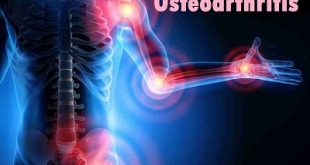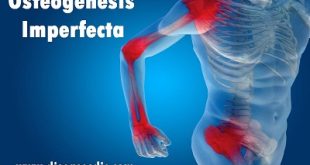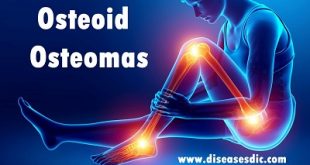What is olecranon bursitis?
Olecranon bursitis causes significant swelling (like a ‘golf ball’) and pain at the back of the elbow. The pain is aggravated by bending the elbow and is particularly painful if you lean on the point of the elbow. The hallmark sign is swelling and this can be quite substantial causing significant inconvenience carrying out your daily tasks. On occasion the swelling is not associated with pain.
Olecranon bursitis can occur following a fall onto the point of the elbow or can occur for no reason. If you have redness and significant heat on the elbow the bursa may be infected. If this is the case you must have your elbow assessed by a doctor immediately, to get started on antibiotics. In a majority of cases the pain and swelling resolves spontaneously over many weeks. However, on occasion the pain and swelling can remain. If so, an ultrasound guided procedure can be carried out to drain the fluid and inject a small amount of steroid to reduce pain and ensure the swelling does not return.
Pathophysiology
Whether it be traumatic or the introduction of an infectious pathogen, the inciting event causes a reactive inflammation in the bursa. The inflammatory cascade causes the extravasation of protein and synovial type fluid into the bursa. The result is the marked round swelling associated with this condition.
Causes of olecranon bursitis
Your elbow can start swelling for several reasons:
- Trauma: A hard blow to the elbow such as hitting it or falling on top of it could cause the bursa to swell.
- Repeated elbow movements may be a cause in certain athletes. For example, those whose sports involve throwing by raising the arm above the head (such as cricket or baseball players, javelin throwers) or weightlifters.
- One-off injury such as a blow to the back of the elbow may set off inflammation.
- Prolonged pressure: Leaning your elbow against a hard surface over a long time can irritate the bursa. Plumbers, air-conditioning technicians, and others who have to work on their elbows are more likely to get this.
- Medical conditions: If you have another condition such as rheumatoid arthritis (a disease where your immune system attacks your joints), gout (a type of arthritis), or kidney failure in which you need dialysis (your blood is filtered through a machine), you have a higher chance of getting Popeye’s elbow.
- Infection: If your bursa is infected from a cut, scrape, or insect bite, this will cause the sac to fill up with extra fluid, swell, and get red.
- Unknown (idiopathic): Many cases occur for no apparent reason. However, it is possible that some of these are due to a mild injury that has been forgotten.
Risk factors
Anyone can develop bursitis, but certain factors can increase your risk:
Age. Bursitis becomes more common with aging.
Occupations or hobbies. If your work or hobby requires repetitive motion or pressure on particular bursae, your risk of developing bursitis increases. Examples include carpet laying, tile setting, and gardening, painting and playing a musical instrument.
Other medical conditions. Certain systemic diseases and conditions — such as rheumatoid arthritis, gout and diabetes — increase your risk of developing bursitis. Being overweight can increase your risk of developing hip and knee bursitis.
What are the symptoms of olecranon bursitis?
There are two types of olecranon bursitis:
- Non-infected (aseptic)
- Infected (septic)
It is not always obvious which type it is, but the symptoms tend to be slightly different. The aseptic type is the most common.
- Pain with direct pressure either during weight-bearing or when touching the area.
- Swelling at the posterior aspect (back) of the elbow. In some cases, the olecranon bursa can become significantly swollen resulting in a large fluid-filled bulge.
If the olecranon bursa is septic the following symptoms may be present:
- The skin over the olecranon may become red.
- Increased temperature. Between 63 and 100% of all patients with olecranon bursitis have a red and hot elbow.
- In some cases, you may feel unwell. Look in on bursitis and a fever may be the sign of an infected bursa.
If you experience all three of these symptoms it is strongly advised that you make an appointment with your GP.
Complications
Septic olecranon bursitis poses the greatest risk of complications. These may include:
Fistulae — may result when septic olecranon bursitis has spontaneously ruptured, or after incision and drainage.
Infective complications (rare), including:
- Secondary septic arthritis — rare because the olecranon bursa does not communicate with the elbow joint except in some cases of chronic inflammatory arthropathy. However, secondary septic arthritis has been documented in people with rheumatoid arthritis.
- Bacteraemia and toxic shock syndrome.
- Sepsis in immunocompromised people.
- Osteomyelitis of the olecranon process due to persistent infection.
- Necrotizing fasciitis.
Diagnosis of olecranon bursitis
Significant, site-specific swelling can make elbow bursitis easy to identify. Nonetheless, a doctor must rule out other possible elbow problems, such as arthritis, tendinitis, a fracture, and sarcoma (tumor), before making a diagnosis of elbow bursitis. To do this, a doctor will use a combination of diagnostic tools.
Medical Visit
A physician or other licensed medical care provider can conduct a:
- Patient interview. The doctor will ask a patient to describe the onset of symptoms and the pattern of pain and swelling. In addition, information about the patient’s medical history, occupation, and hobbies can provide important clues as to whether the elbow’s bursa is infected (septic bursitis).1
- Physical exam. The doctor will examine the patient’s joint, noting swelling at the elbow, tenderness and pain points, and range of motion.
Inflammation of the elbow bursa is usually visible and palpable, so the physical exam is an important part of the diagnosis.
Testing skin temperature
One way to possibly determine if the bursa is infected is to compare the skin temperature of the affected elbow to that of the unaffected elbow.
A doctor may also order medical imaging and/or lab tests. Because prompt treatment with antibiotics is recommended for septic arthritis, a doctor who strongly suspects septic bursitis in the elbow may prescribe antibiotics without definitive diagnostic testing.
Aspiration and Lab Tests
- Bursal aspiration. If a septic olecranon bursitis is suspected a small amount of bursal fluid is removed using a needle and sent to pathology lab for investigation. In addition to relieving pressure and making the patient more comfortable, aspiration provides a fluid sample that can be tested for infection.
Additional lab testing.
- Blood tests may also be used to help rule out or confirm systemic (body-wide) infection and inflammatory conditions, such as rheumatoid arthritis, psoriatic arthritis, and gout. These conditions can cause joint pain and increase the likelihood of developing bursitis, including elbow bursitis.
Medical Imaging
If it is unclear whether symptoms are caused by elbow bursitis or another condition, a doctor may request an:
- X-ray, which can show broken bones and signs of elbow osteoarthritis
- Magnetic resonance imaging (MRI), which can show detailed images of bone tissue as well as soft tissues near the elbow joint, including the triceps tendon. MRI can help rule out septic bursitis in some cases, but it cannot definitively distinguish between all cases of septic bursitis or aseptic bursitis.3
- Ultrasound, which can detect areas of fluid, such as the excess synovial fluid found in a swollen bursa.
Medical imaging is not required for and accurate diagnosis in many cases.
What is the treatment for olecranon bursitis?
In many cases, olecranon bursitis clears up on its own with simple care such as resting the elbow, avoiding pressure on it, and applying ice packs. Some people find a compression bandage on the elbow makes it more comfortable. As long as there is no infection, over time most cases of olecranon bursitis will then settle on their own.
Other treatments advised in some cases include:
- Anti-inflammatory medication (such as ibuprofen, naproxen, diclofenac, etc) may be prescribed to reduce inflammation and swelling. Paracetamol is another option if the elbow is painful.
- Draining the fluid (aspiration) can be done by a healthcare professional with a sterile needle and syringe if a lot of fluid builds up. However, the fluid tends to build up again after being drained. Therefore, you may be advised to wear a tight pressure bandage for a while after the fluid has been drained, to prevent it building up again.
- A steroid injection into the bursa may cure the problem. Steroids are good at reducing inflammation. However, steroid injections sometimes cause infection in the bursa.
- Surgery to remove the bursa is an option if the above do not work.
- Antibiotics are needed if the cause of the bursitis is an infection. Normally an antibiotic such as flucloxacillin or erythromycin is used until the results of the tests on the aspirated fluid are available. Then the choice of treatment can be changed if necessary and directed at the exact germs (bacteria) causing the infection. Flucloxacillin and erythromycin treat the most common types of germs which cause olecranon bursitis.
If the bursitis is not from an infection, there are several management options.
- Elbow pads. An elbow pad may be used to cushion your elbow.
- Activity changes. Avoid activities that cause direct pressure to your swollen elbow.
- Physical Therapy. A physical therapist is specially trained to give patients exercises and stretches to help improve their conditions. This can help improve movement after the bursitis has developed, and protect from further injury by strengthening the muscles near the elbow.
Home Remedies
If the elbow, or olecranon, bursa is swollen from an injury or too much pressure on the elbow then home remedies can be the first step in treatment. In this section, we’ll cover home remedies for olecranon bursitis that are both simple and effective.
Rest
- Elbow bursitis can be caused by an injury, overuse, or direct pressure on a hard surface for long periods. If one of these reasons is the cause for your inflamed bursa then rest is one of the best remedies. Resting will give the inflamed bursa time to heal and allow the swelling to go down.
Ice and Heat
- Using ice on your elbow will minimize pain and reduce inflammation. Cold both interrupts the pain signal and reduces swelling by tightening blood vessels. These two mechanisms provide pain relief and lessen swelling. Ice packs can be placed on your swollen elbow for 20-minute intervals.
- Heat is a great home remedy that both soothes and relaxes the body. It works by widening blood vessels to bring more blood to the area, which allows more oxygen and nutrients to reach the site of injury. Avoid using heat during the initial injury phase, the increase of blood in the area can cause more swelling to occur.
Elbow Supports
- Elbow pads wrap around the elbow joint to cushion the back of the elbow and prevent further injury from pressure. The wrap portion of the elbow pad will also provide some compression, which will control swelling.
- An elbow brace is another option. The brace will immobilize the joint which will give it time to rest and recover. Talk to a sports medicine healthcare professional to help you determine the right elbow support for you.
Prevention of olecranon bursitis
While not all types of bursitis can be prevented, you can reduce your risk and the severity of flare-ups by changing the way you do certain tasks. Examples include:
- Using kneeling pads. Use some type of padding to reduce the pressure on your knees if your job or hobby requires a lot of kneeling.
- Lifting properly. Bend your knees when you lift. Failing to do so puts extra stress on the bursae in your hips.
- Wheeling heavy loads. Carrying heavy loads puts stress on the bursae in your shoulders. Use a dolly or a wheeled cart instead.
- Taking frequent breaks. Alternate repetitive tasks with rest or other activities.
- Maintaining a healthy weight. Being overweight places more stress on your joints.
- Strengthening your muscles can help protect your affected joint.
- Warming up and stretching before strenuous activities to protect your joints from injury.
 Diseases Treatments Dictionary This is complete solution to read all diseases treatments Which covers Prevention, Causes, Symptoms, Medical Terms, Drugs, Prescription, Natural Remedies with cures and Treatments. Most of the common diseases were listed in names, split with categories.
Diseases Treatments Dictionary This is complete solution to read all diseases treatments Which covers Prevention, Causes, Symptoms, Medical Terms, Drugs, Prescription, Natural Remedies with cures and Treatments. Most of the common diseases were listed in names, split with categories.







